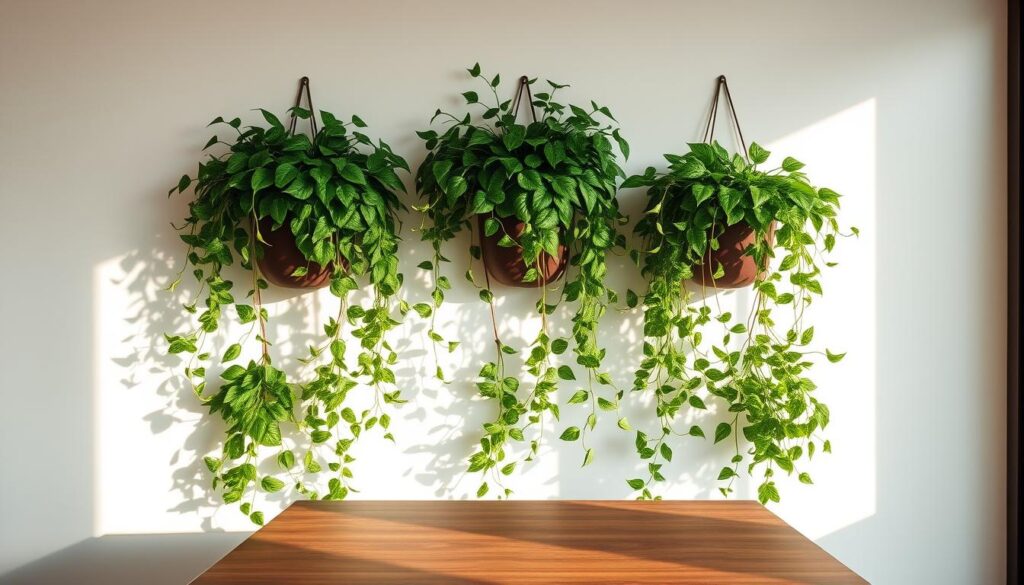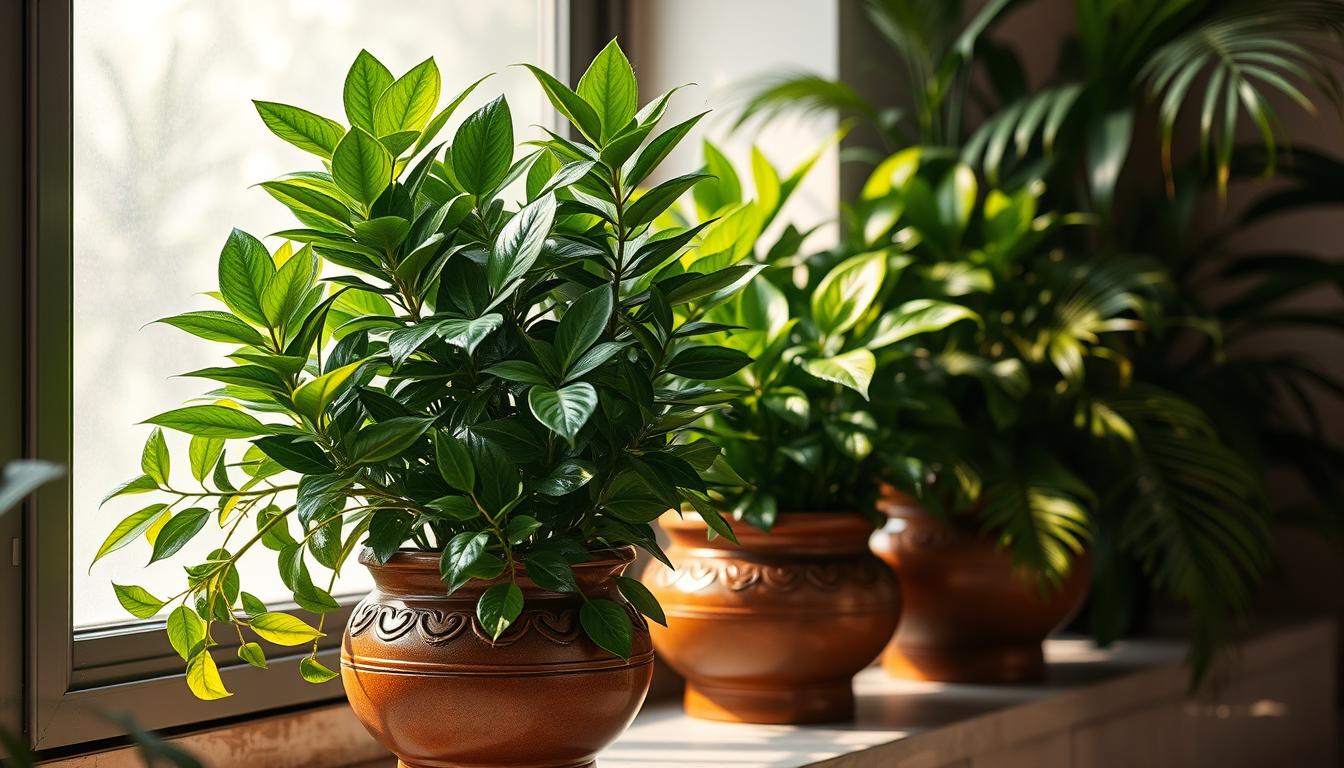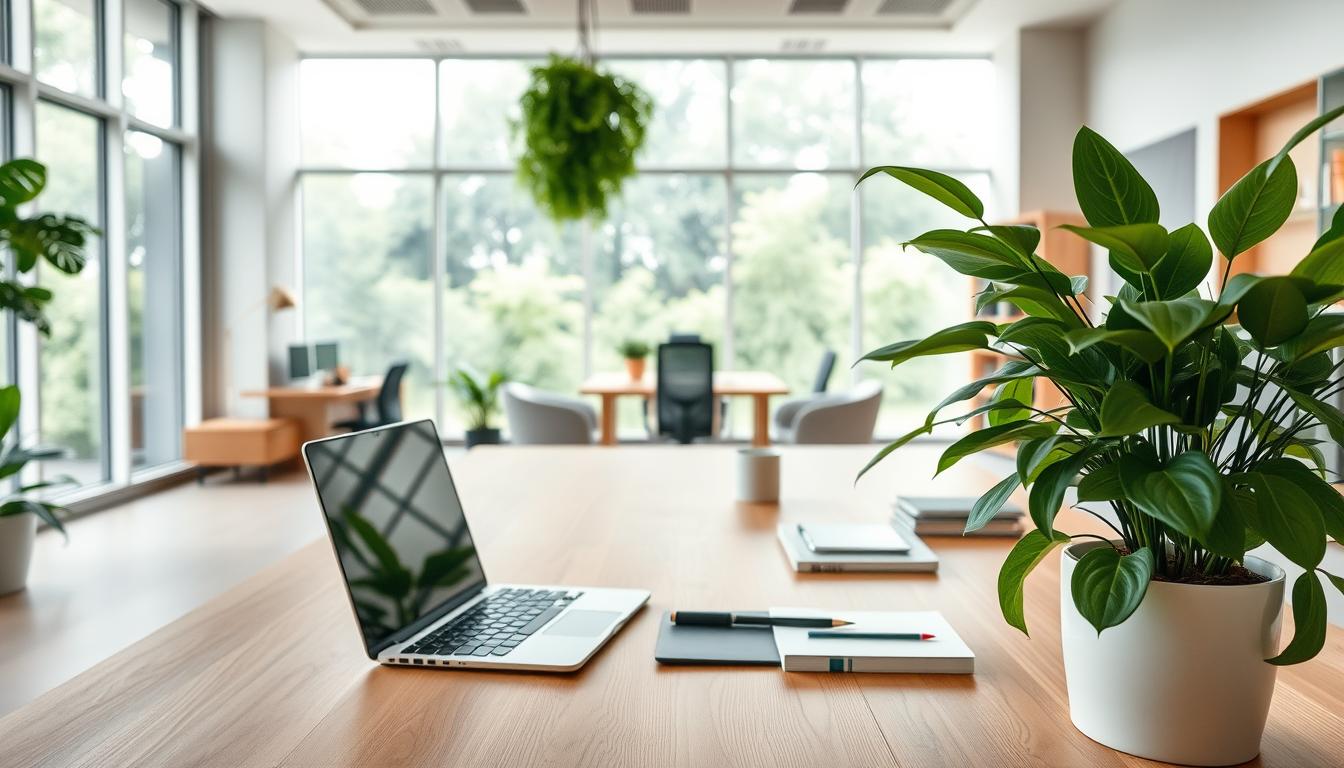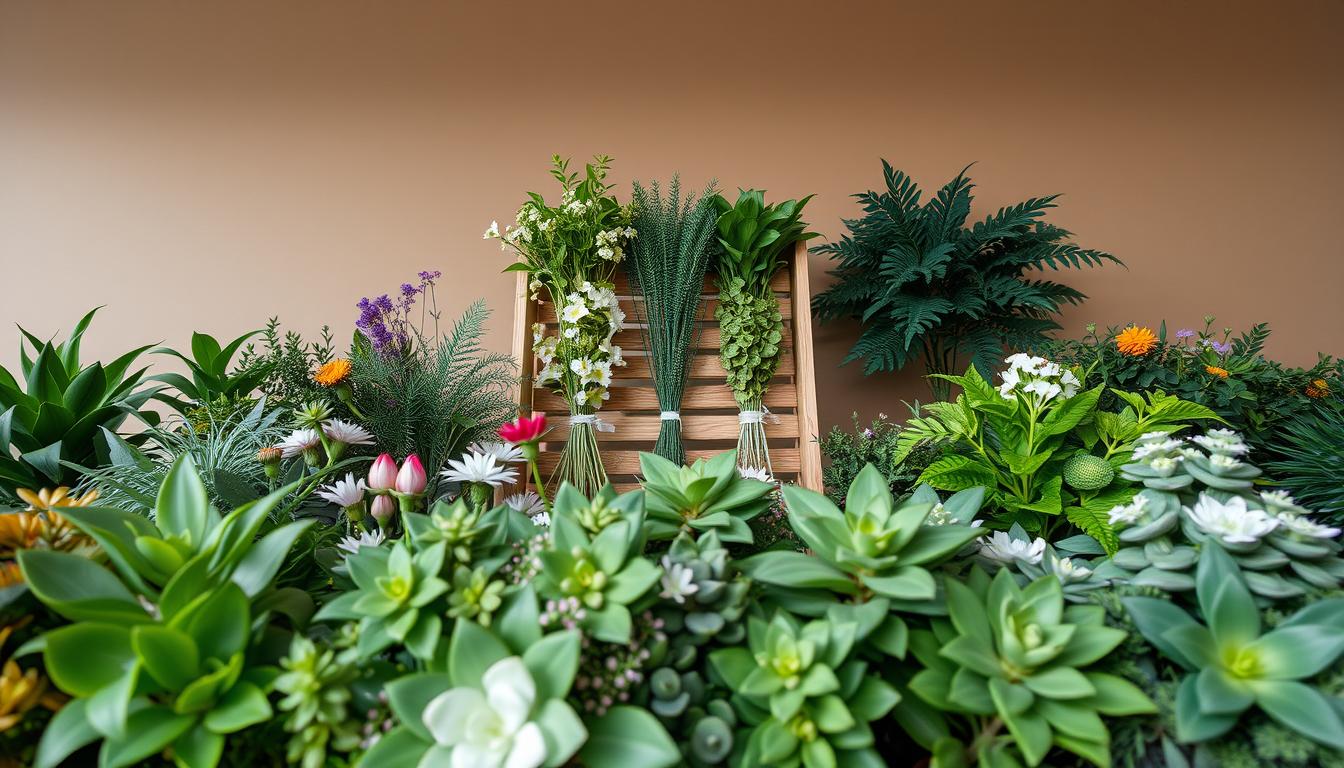Keeping your artificial plants beautiful is key for looks and lasting longer. Over time, dust can build up and make them look dull. To keep your decorations bright, learn the best ways to clean them.
This guide will show you how to remove dust, especially in dusty places. Find out the top tips for taking care of artificial plants. Keep your greenery looking lively and welcoming.
Introduction to Artificial Plants
Artificial plants are now a big part of modern home decor. They close the gap between looking good and being easy to take care of. These fake plants look like real ones but don’t need any upkeep. They come in many styles like lifelike trees and fancy setups. Artificial plants make any inside or outside area look better.
People love these plants because they are easy care and look real. Homeowners want pretty greenery without watering or sunlight. Faux plants are perfect for busy people. They can beautify a living room, office, or patio. All this without any need for care.
With a growing interest in living green, artificial plants are becoming more popular. They are an eco-friendly choice that still looks stylish. This makes them a smart buy for anyone wanting to add green to their space.

Why Cleaning Artificial Plants is Essential
Artificial plants add beauty and a natural feel to any space. It’s important to keep them looking their best. Regular cleaning helps maintain their appearance. This makes any room more welcoming.
Maintaining Aesthetic Appeal
Dust and dirt can make artificial plants look dull. A dirty plant can seem tired and unappealing. Regular cleaning keeps them bright and lifelike. This makes your space look better.
Extending Lifespan of Your Faux Foliage
Clean faux plants last longer. Avoiding dust buildup helps prevent damage. This care keeps their colors bright. Your artificial plants will look good year after year.
Understanding Dust Accumulation
Dust build-up is a big problem for keeping artificial plants looking good. Over time, dust gathers on these fake materials. This makes them look less beautiful. Knowing how dust sticks to these plants shows why cleaning is key to keeping them pretty and lasting longer.
How Dust Affects Artificial Plants
Dust can make the colors of artificial plants look dull. They seem less lifelike and lose their charm. Dust on leaves can also block light, making them less bright. Cleaning them regularly is crucial. It helps them keep making your home look beautiful.
Common Sources of Dust in Indoor Environments
Knowing where dust comes from helps in tackling its impact on fake plants. Common sources are:
- Flooring materials, especially carpets that trap and release dust
- Textiles, such as curtains and upholstery, that shed fibers
- Ventilation systems that circulate dust particles around the room
- Humidity levels that affect the settling of dust
By being aware of these sources, you can act to keep dust down. This helps your decor stay nice.
Key Tools for Cleaning Artificial Plants
To keep artificial plants looking great, you need the right tools. Getting the best items for the job helps take care of artificial plants. Here are some key cleaning supplies that make cleaning simpler and more effective:
- Microfiber cloths: These soft cloths are perfect for dusting surfaces without scratching delicate leaves.
- Feather dusters: Ideal for reaching into tight spaces and removing dust from intricate plant designs.
- Soft brushes: A gentle brush helps dislodge dirt from textures, ensuring a thorough clean.
- Compressed air: Useful for blowing debris out of hard-to-reach areas, effectively removing accumulated dust.
When you use these cleaning tools carefully, you can avoid damaging your artificial plants. They’ll stay looking fresh and attractive.
How to Clean Artificial Plants in Dusty Environments
Keeping artificial plants looking great in dusty places is easy with the right cleaning steps. Simple, quick cleaning rituals will keep your fake plants looking fresh. Let’s explore some key dust removal methods.
Simple Dusting Techniques
To dust effectively, use a microfiber cloth or a soft brush. These tools are great because they trap dust without scratching. Here’s how to dust properly:
- Gently wipe leaves and stems with a microfiber cloth to remove loose dust.
- Use a soft-bristled brush to reach into crevices and intricate designs.
- For larger plants, consider a gentle vacuum with a brush attachment to draw out dust.
Utilizing a Hairdryer for Dust Removal
A hairdryer is a quick-fix tool for cleaning. When using it, keep it on a low setting and hold it away from the plant. Point the air to push dust off the leaves, avoiding damage. This method works great for detailed plants where dust hides.
Deep Cleaning Methods
To make your artificial plants look new, some deep cleaning methods are key. Using these techniques helps keep the plants looking great. They also get rid of dirt and dust.
Shower Method for Thorough Cleaning
Using the shower to clean your plants is a great idea. Put the plants under lukewarm water in the shower. Just make sure not to get the bases too wet to avoid damage. Let them dry in a spot that doesn’t get too much sun.
Vinegar Solution for Stubborn Grime
If dirt won’t budge, try using a vinegar solution. Mix water and white vinegar equally in a spray bottle. Spray it lightly on the plants and wait a few minutes. Then, use a soft cloth to wipe them down. This leaves the plants looking spotless without harming them.
Routine Maintenance Tips
To keep your artificial plants looking great, stick to a regular care routine. Knowing how often to clean and sticking to a dusting schedule are key. Doing this not only makes them look better but also makes them last longer.
How Often to Dust and Clean
Dust can build up pretty fast, especially in certain places. It’s a good idea to dust your fake plants once a month. If they’re near windows or vents where there’s more dust, you might need to do it more often. Every three to six months, give them a thorough clean to get rid of any tough dirt and keep them looking nice.
Optimal Conditions for Artificial Plants
Artificial plants do best in places that aren’t too humid or hot. Keep them out of direct sunlight to stop the colors from fading. By keeping them in the right conditions, you’ll help them stay looking good for a long time.
Special Considerations for Different Materials
Understanding the various types of artificial plant materials is key to their upkeep. Each material, like silk or plastic, needs a unique cleaning method to last longer. Silk plants, for example, gather dust easily and should be cleaned gently to avoid harm.
On the other hand, plastic and vinyl plants are tougher. Yet, they still need proper care tailored to their material. Here are important tips to remember:
- Use a soft cloth or feather duster for silk or delicate materials to prevent tearing.
- For plastic materials, a slightly damp cloth may be used to remove stubborn dust.
- Avoid using harsh chemicals, as they may lead to discoloration of artificial plant materials.
- Test any cleaning solution on a small, inconspicuous area first.
Proper care for artificial plants makes them look better and last longer. By using the right cleaning methods, you can avoid damage from neglect. This way, your fake plants will stay bright and lively for many years.
Best Practices for Storing Artificial Plants
Proper storage of artificial plants is key to keeping them looking great. It helps avoid dust and damage over time. Wrapping them up is crucial for their care.
Bubble wrap or soft cloths are best for protecting the plants. Keep them in a cool, dry place away from sunlight. Sunlight can make the colors fade and harm the materials.
When putting away seasonal plants, sort them by size or type. This makes it easy to find and display them later. Keeping your storage neat helps manage your collection better.
- Wrap each plant carefully before placing it in storage.
- Label containers to identify the contents quickly.
- Store in climate-controlled environments to prolong life.
Benefits of Using Specialty Cleaning Products
To keep artificial plants looking great, using the right products is key. Special cleaners made for these plants boost their beauty and life. They ensure your faux foliage looks its best by getting rid of dust and dirt gently.
These products are created to clean without harming the plants. This keeps your artificial greenery in top shape.
Artificial Plant Cleaners
Artificial plant cleaners help keep synthetic materials safe. They clean off dirt and dust and add a protective coat to stop more from gathering. Brands like Windex and Clear-It have cleaners just for fake plants. Using them keeps your indoor plants looking fresh and bright.
Homemade Cleaning Solutions
Making your own cleaners can save money and be effective. People like mixing simple ingredients for their solutions. They use things like water and vinegar or soft soap with warm water.
This lets them avoid strong chemicals found in store-bought cleaners. It’s a safer way to keep their artificial plants clean.
Creating a Dust-Free Environment
To have a home without dust, you need the right tools and to clean often. Air purifiers are important for this goal. They filter out dust and allergens, making the air in your home better.
Air Purifiers and Their Role
Air purifiers pull in air, clean it through filters, and send it back out. This lowers the amount of dust in the air. They often have HEPA filters, catching even smaller particles, making them great for cleaner air.
Cleaning Surfaces Regularly
Cleaning often is also key to a dust-free home. Dust settles on furniture, shelves, and even fake plants. Cleaning often means less dust for air purifiers to handle, keeping your home fresher.
Conclusion
Keeping your artificial plants clean is key to a fresh-looking home. Regular cleaning keeps the fake plants looking bright. It also makes them last longer, which is good for your home’s look.
Cleaning can be easy, from quick dusting to deeper cleans. By doing these regularly, your fake plants will look great. This makes your home nicer to be in. Taking care of your artificial plants keeps their beauty alive.



